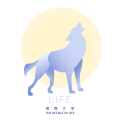Where is Ali located?
阿里地区位于西藏的西部,青藏高原西南部,是西藏乃至全国面向南亚开放的桥头堡、是国家安全屏障的西部战略要地、是冈底斯国际旅游合作区、是生态安全屏障的核心区域、是国家重要矿产资源的储备基地、是西部重要的交通物流枢纽和高原特色牧业生产基地,东西长约700公里,南北宽约680公里,东与那曲地区相连,东南与日喀则市接壤,北与新疆喀什、和田地区相邻,西南与克什米尔地区及印度、尼泊尔等国毗邻,国土面积337170平方公里(33.717万平方公里),平均海拔4500米以上,被称作“世界屋脊的屋脊”“高原上的高原”。
Professional answer
The Ali region is located in the west of Tibet and the southwest of the Qinghai-Tibet Plateau. It is a bridgehead for Tibet and even the whole country to open up to South Asia, a strategic location in the west of the national security barrier, the Gangdise International Tourism Cooperation Zone, the core area of the ecological security barrier, a reserve base for important national mineral resources, an important transportation and logistics hub in the west, and a plateau-specific animal husbandry production base. It is about 700 kilometers long from east to west and about 680 kilometers wide from north to south. It is connected to Nagqu Prefecture in the east, borders Shigatse City in the southeast, and is adjacent to Kashgar and Hotan Prefectures in Xinjiang in the north. It is adjacent to Kashmir and India, Nepal and other countries in the southwest. It has a land area of 337,170 square kilometers (337,170 square kilometers) and an average altitude of more than 4,500 meters. It is called "the roof of the roof of the world" and "the plateau on the plateau".
Ngari Prefecture is located in the southwest border of China, the western part of Tibet Autonomous Region, and the southwest part of Qinghai-Tibet Plateau. It starts from Zamei Mountain west of Tanggula Mountain in the east and is connected to Nagqu Prefecture; it borders Zhongba, Saga, and Angren County in Shigatse City in the middle section of Gangdise Mountain in the southeast; it is adjacent to Kashgar and Hotan Prefectures in Xinjiang by the southern foot of Kunlun Mountains in the north; it connects to the western section of Himalayas in the southwest and is adjacent to Kashmir, India, and Nepal
Ngari is located in the present-day Inner Mongolia. The word "phosphorus fire" in Oroqen language means swampland, and the terrain is soft and lost. There is a human settlement area in Ali, Alihe Town (the county seat of Oroqen Autonomous Banner), which is at the confluence of Ali River and Gan River, and the town is named after the river.
Ngari is located in the southwest border of the motherland. It is an important national security barrier and ecological security barrier. It is known as the "plateau on the plateau" and the "roof of the roof of the world". On the basis of consolidating border security and counter-terrorism and riot prevention tasks, Ali firmly established the concept of "green water and green mountains are gold and silver mountains, and ice and snow are also gold and silver mountains", and worked hard to build a snow-covered pearl with prosperous economy, urban-rural integration, beautiful environment, harmonious society, ecological civilization, and people's happiness.
Nari Prefecture, a region under the jurisdiction of the Tibet Autonomous Region, was formerly known as "Yangtong", "Nari" and "Olisi". It is located in the southwest border of China, the western part of the Tibet Autonomous Region, and the northern part of the Qinghai-Tibet Plateau (Qiangtang Plateau). It borders Hotan Prefecture and Bayinguoleng Mongolian Autonomous Prefecture of Xinjiang Uygur Autonomous Region to the north, Nagqu City to the east, Xigaze City to the southeast, and Nepal, India, and Kashmir to the southwest and west. The area of Ali Prefecture is 337,170 square kilometers[28], making it the second largest prefecture-level unit in Tibet, second only to Nagqu City.
Nari is located in the western part of Tibet. Ali is a high-altitude area and city, but many people go to Ali Prefecture for self-driving tours every year because the local scenery is very outstanding
Similar Q&A
recommend What is the name of Alibaba's artificial intelligence?
E-c News Continuously pushing e-commerce knowledge to you








Latest Q&A More
-
Do I need a trademark to open a franchise store on Pinduoduo to sell books?
#Pinduoduo#
-
How to withdraw from a Pinduoduo store
#Pinduoduo#
-
How to withdraw from Pinduoduo merchants
#Pinduoduo#
-
How to pay fees when closing a Pinduoduo store
#Pinduoduo#
-
How to withdraw from Pinduoduo
#Pinduoduo#
-
Which store on Pinduoduo is authentic?
#Pinduoduo#
-
Which stores on Pinduoduo can buy genuine products?
#Pinduoduo#
-
How to check the store under Pinduoduo
#Pinduoduo#
-
How to receive Pinduoduo online game products
#Pinduoduo#
-
How to sell the electronic version on Pinduoduo
#Pinduoduo#
E-c News 2025-12-21 23:46:40

- African netizens use China Africa cross-border e-commerce platform for online shopping
- how is the new seller of cross-border e-commerce doing?
- how can cross-border e-commerce Amazon sell on Amazon platform without goods?
- Amazon store opening process and cost analysis!
- Amazon plans to expand its pharmacy business on a large scale and will add same day delivery service



